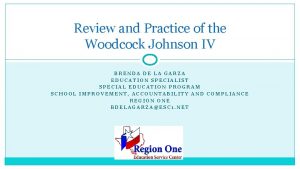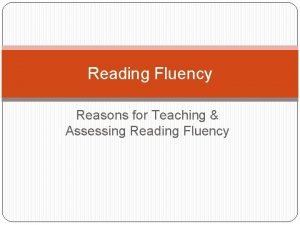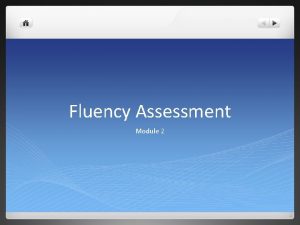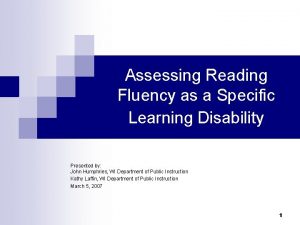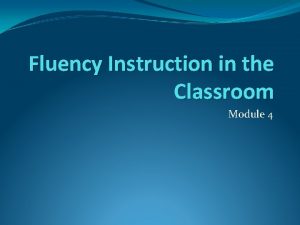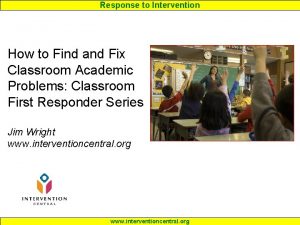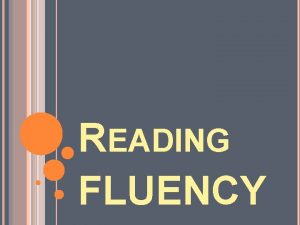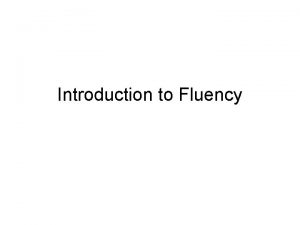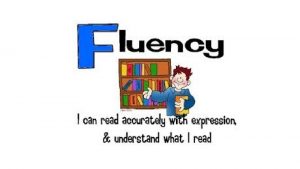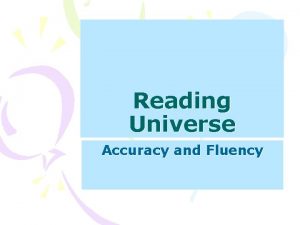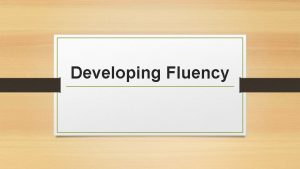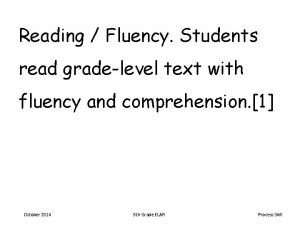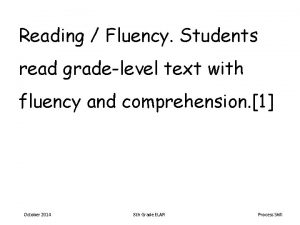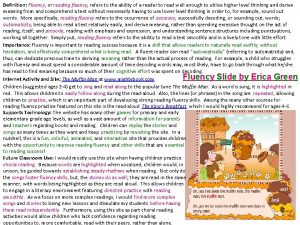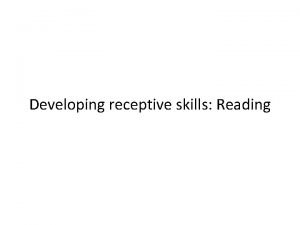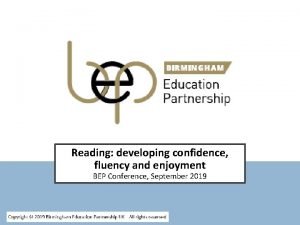Developing Reading and Writing Fluency Fluency Fluency is














- Slides: 14

Developing Reading and Writing Fluency

Fluency “Fluency is the ability to read effectively, and it involves three components: 1) reading rate, word recognition and prosody Reading rate-refers to speed Word recognition-instantly recognize most words Prosody-expression, phrasing, and intonation Fluent readers comprehend more of what they are reading because they recognize and identify words easily Most students gain reading fluency by third grade (at least 100 wpm)

Promoting Reading Fluency Repeated readings Choral Reading Echo Reading Buddy Reading Model chunking and phrasing Frequent reading practice Reading stamina-(reading silently) Round-Robin Reading-no longer recommended

Word Recognition Sight words-words that students recognize on “sight” Through repeated readings, students develop automaticity, the ability to quickly recognize words without analyzing the word or word parts

Word Recognition Teach: Sight Words High Frequency Words By: Posting word walls Making Words Minilessons Repeated readings reading Clapping Chanting

Word Identification Strategies to identify words that student’s don’t recognize immediately Phonic Analysis Analogies Syllabic Analysis Morphemic Analysis

Figure 6 --6 Word Identification Strategies Gail E. Tompkins Literacy for the 21 st Century, 3 e Copyright © 2003 by Pearson Education, Inc. Upper Saddle River, New Jersey 07458 All rights reserved.

Phonic Analysis Students use knowledge of sound symbol relationships Phonic generalizations-blends, cvce patterns, digraphs, etc.

By Analogy Student use knowledge of rhyming words Students use knowledge of onsets and rimes (word families) Bat, that, chat, mat, rat, slat, etc.

Syllabic Analysis Breaking words in to syllables can often help with pronunciation A syllable is a group of letters that forms a pronunciation unit Every syllable contains a vowel sound Diphthongs are treated as single units A syllable may have more than one vowel letter Open syllables- end in vowel sounds Closed syllables- end in consonant sounds Try these words: turtle, tiger, giraffe, zebra, alligator, elephant, zookeeper, monkey, facilitate, transportation

Morphemic Analysis Root words- a morpheme to which affixes are added Ex. port – report, reporter, transport, portable, deport Affixes: Prefixes and Suffixes-Letters or sequences of letters that are added to root words to Good readers learn to recognize common prefixes and suffixes Knowledge of prefixes/suffixes helps readers decode words as well as decipher meanings Suffixes- ex. –able (able to), -er (one who), -tion/sion (state of being), -ous (full of) Prefixes- ex. un-(not), pre-(before), bi (two), in-(not), dis-(not), bio (life)

Venn Diagram for trans and port transport

Assessment of Reading l l Speed Phrasing Prosody Automaticity

Figure 6 --11 Guidelines for Teaching Students to Identify Words Gail E. Tompkins Literacy for the 21 st Century, 3 e Copyright © 2003 by Pearson Education, Inc. Upper Saddle River, New Jersey 07458 All rights reserved.
 Pre reading while reading and post reading activities
Pre reading while reading and post reading activities Woodcock johnson 4
Woodcock johnson 4 Definition of reading fluency
Definition of reading fluency Reading fluency checklist
Reading fluency checklist Cbm reading fluency passages
Cbm reading fluency passages Definition of reading fluency
Definition of reading fluency Fluency oriented reading instruction
Fluency oriented reading instruction Intervention central reading fluency
Intervention central reading fluency Style of reading
Style of reading Developing reading power
Developing reading power What is definition in concept paper
What is definition in concept paper 5 centavos symbol
5 centavos symbol What are the aims of teaching reading
What are the aims of teaching reading Difference between silent reading and reading aloud
Difference between silent reading and reading aloud What is extensive reading
What is extensive reading

